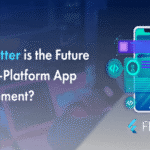Mobile AppFrom Idea to Execution: A Step-by-Step Guide to AI Software Development in India

Table of Contents
Introduction: Why AI Software Development Is Booming in India
India is rapidly emerging as a global hub for AI software development, driven by its vast tech talent, cost efficiency, and a growing ecosystem of innovation. Businesses across sectors—retail, healthcare, logistics, fintech, and edtech—are embracing artificial intelligence to unlock automation, personalization, and predictive insights.
From startups building smart chatbots to enterprises deploying computer vision for quality control, the demand for developing AI software has skyrocketed. But executing an AI project isn’t just about coding. It requires a systematic, strategic, and phased approach—especially if you’re partnering with an AI software development company in Chennai.
Let’s walk through the complete journey of building AI software, step-by-step.
Step 1: Identifying the Right AI Use Case for Your Business
Every successful AI project starts with a well-defined problem statement. You don’t “do AI” for the sake of it—you solve a business challenge that AI is uniquely suited for.
Start by asking:
- Where are your bottlenecks?
- Are you dealing with repetitive tasks, large volumes of data, or decision-making complexity?
- Can prediction, classification, recommendation, or automation improve business outcomes?
Common AI use cases:
- E-commerce: personalized recommendations, churn prediction
- Healthcare: diagnostics, appointment bots, remote monitoring
- Logistics: route optimization, demand forecasting
- BFSI: fraud detection, loan risk scoring
- Manufacturing: predictive maintenance, quality inspection
Once the use case is validated, you’re ready to move to the next phase.
Step 2: Evaluating Data Availability and Readiness
AI is only as good as the data that powers it.
Before diving into development, conduct a data audit:
- Do you have enough historical data?
- Is your data structured (e.g., SQL), semi-structured (e.g., JSON), or unstructured (e.g., images, text)?
- What’s the data quality (missing values, inconsistencies)?
- Are there any compliance issues (GDPR, HIPAA)?
At TechHeaders, our AI experts help clients set up data pipelines and even generate synthetic data where required. We also use techniques like data labeling, cleaning, augmentation, and transformation to prepare datasets for modeling.
Pro Tip: If your data is limited, consider starting with a narrow AI MVP using pre-trained models.
Step 3: Partnering with an Experienced AI Development Company
Choosing the right development partner can make or break your AI project.
Look for a company that:
- Specializes in both custom AI development and data engineering
- Has delivered successful AI solutions across industries
- Understands model architecture, MLOps, and edge/cloud deployment
- Offers cross-platform support (e.g., web, mobile, embedded)
A reliable AI Development Company will help you:
- Refine your use case
- Choose the right ML model (regression, classification, clustering, etc.)
- Create scalable architecture
- Ensure security and compliance
India offers a wide talent pool with deep AI expertise, and cities like Chennai are at the forefront of building global-grade AI products.
Step 4: Prototyping and MVP Development
Before full-scale development, building a proof of concept (PoC) or minimum viable product (MVP) is essential. This helps you:
- Validate feasibility
- Get stakeholder buy-in
- Estimate ROI and performance
- Identify tech gaps and data shortcomings
An MVP might involve:
- A simple chatbot that answers 50% of user queries
- A sentiment analysis engine for a defined dataset
- An image recognition tool with 80% accuracy on sample images
This stage helps in fine-tuning model goals and metrics (e.g., accuracy, precision, recall, latency) before full implementation.
Step 5: Model Training, Evaluation, and Optimization
Now the actual AI model development begins. This includes:
- Selecting a model type: CNN, RNN, Transformers, Decision Trees, etc.
- Splitting data: into training, validation, and test sets
- Training and tuning: adjusting hyperparameters like learning rate, batch size
- Evaluation: using confusion matrix, ROC curve, F1-score
- Optimization: through regularization, ensemble models, feature engineering
Developers use platforms like TensorFlow, PyTorch, and Scikit-learn, along with Jupyter Notebooks, MLFlow, and cloud-based GPUs.
TechHeaders integrates automated ML pipelines (MLOps) for continuous delivery, testing, and monitoring of models.
Step 6: Deployment and Integration with Existing Systems
Once your model is tested and production-ready, it’s time to deploy.
Options include:
- On-premise: for data-sensitive environments
- Cloud: AWS Sagemaker, Azure ML, Google AI Platform
- Edge deployment: for mobile, IoT, or AR/VR applications
You’ll also need APIs, microservices, or SDKs for seamless integration with:
- Mobile apps (iOS/Android built by Mobile App Development Company in Chennai
- CRM or ERP systems
- Web dashboards
Proper deployment ensures your AI solution doesn’t live in a silo—it becomes part of your business ecosystem.
Step 7: Monitoring, Retraining, and Continuous Improvement
AI isn’t “set and forget.” It’s dynamic and needs constant refinement.
Post-deployment, prioritize:
- Real-time monitoring (latency, accuracy, anomalies)
- User feedback loop
- Retraining with new data
- A/B testing for performance enhancements
- Updating models with concept drift or seasonality changes
Our AI support team offers a 360-degree maintenance plan with dashboards, alerts, and retraining pipelines that ensure your AI system evolves with your business.
Real-World Case Studies of AI Software Development in India
Case Study 1: Confidential – Healthcare AI Diagnostic Tool
A Chennai-based medtech startup (NDA signed) approached TechHeaders to build an AI-based image recognition system for chest X-rays. We developed a CNN model that improved diagnostic accuracy by 38%and reduced radiologist workload by 42%. The tool is now used in 6+ hospitals across India.
Case Study 2: Confidential – Retail Demand Forecasting System
A national retail chain needed help forecasting demand across 400+ stores. We implemented a hybrid AI model combining time-series analysis and LSTM networks. Within 6 months, stockouts reduced by 27%, and inventory cost dropped by 18%.
These are just a few examples of how businesses in India are transforming operations by developing AI software with strategic partners.
Final Thoughts: Turning Your AI Vision into Reality
AI can transform your operations, decision-making, and customer experience—but only if developed right. From ideation to execution, this journey requires data discipline, domain understanding, and continuous innovation.
Whether you’re a startup or enterprise, you need a trusted partner who can translate your goals into scalable AI products. TechHeaders is proud to be that partner—backed by a decade of expertise, agile teams, and deep AI knowledge.
Take the first step toward your AI vision with our AI Software Development Services. Let’s turn your ideas into intelligent action.
FAQ – AI Software Development
How long does it take to develop AI software?
Depending on complexity, it ranges from 8 to 24 weeks including model development, integration, and testing.
Is AI software expensive to build in India?
India offers significant cost advantages. You can save up to 50–60% compared to Western markets, with no compromise on quality.
Can small businesses benefit from AI?
Absolutely. AI is no longer limited to enterprises. With custom MVPs, even SMEs can benefit from AI-enhanced automation and insights.
Which programming languages are used in AI software development?
Primarily Python, R, Java, C++, and newer stacks like Julia for scientific computing.




